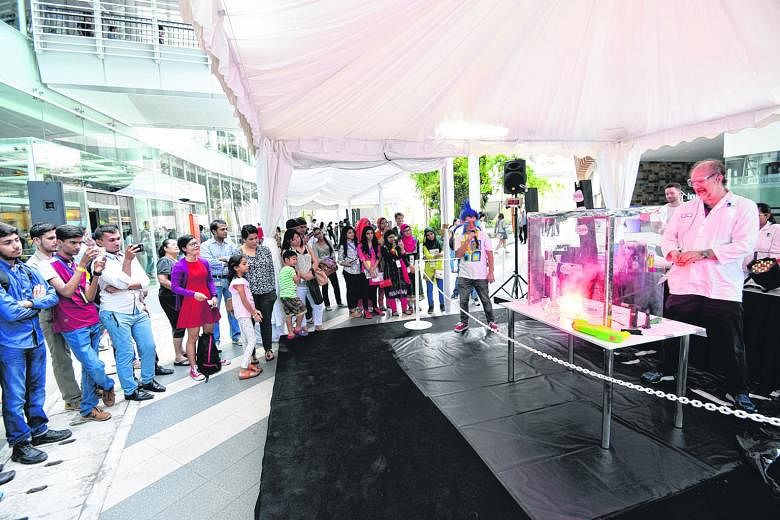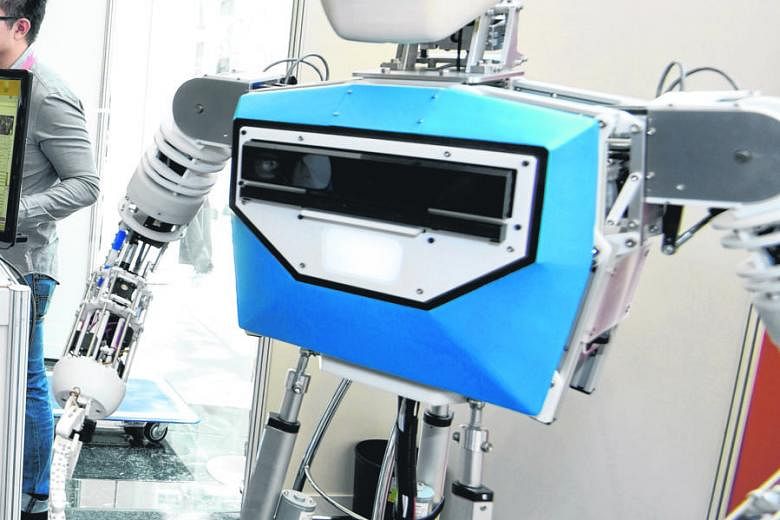The inaugural one-north Festival drew an eager crowd of 6,000 people over the weekend, inspiring young and old alike with the wonders of research and innovation.
Among those who attended the celebration of science were students from junior colleges, polytechnics and secondary schools, as well as younger children with their parents, who were intrigued by the many exhibits on display at the one-north research hub in Ayer Rajah.
Children were especially in awe of the autonomous EDGAR-2 robot created by researchers from Nanyang Technological University (NTU).
Dr Wong Choon Yue, a research fellow at NTU and one of the researchers involved in the robot's creation, said that the children enjoyed asking the robot questions. And one question stood out.
"There was a girl who asked the robot if it had ever been in love, and because the concept of being in love was lost on the robot, it replied: "'Love'? I don't know where that is."
The display also attracted fellow professionals who wanted to find out more about the robot's technical details, and tertiary students who were keen to work with the researchers, said Dr Wong.
Housewife Lu Qinghui, 34, said that she gained a lot of general knowledge from the festival, and it was also helpful in introducing her toddlers - an 18-month-old boy and a girl aged 31/2 - to science.
"The exhibits showed them how science is alive and everywhere in their daily lives, something which they cannot get just from reading books," she said.
"In particular, they enjoyed the hands-on workshops, such as the When Science and Art Collide painting session."
During this event, participants used pipettes filled with paint to create art.
Organised by the Agency for Science, Technology and Research (A*Star) and JTC, the one-north Festival saw the participation of 35 groups.
It focused on the culture of research, innovation, creativity and enterprise within the one-north precinct, and visitors were treated to talks, behind- the-scenes tours, workshops and exhibits by leading scientists, researchers and entrepreneurs.
A*Star chairman Lim Chuan Poh said the festival had brought the scientific community together, and that many of the activities were oversubscribed by the public.
"It was an excellent occasion to share what is happening in one-north with members of the public and, very importantly, inspire the young into discovery, innovation and enterprise," he said.
Dr Anand Andiappan, a senior research scientist at A*Star's Singapore Immunology Network, led the popular public talk "Making Sense of Allergies", together with Dr Elizabeth Tham, an associate consultant in the Division of Paediatric Allergy, Immunology and Rheumatology at the National University Hospital.
Among the audience at the fully booked talk were the elderly who were keen to learn about allergy treatments, and parents worried about their children developing allergies, said Dr Anand. Some also wanted to know how to prevent dust mites from invading their homes.
"(The festival) was a good example of how we can communicate science to the public, which is something we need to work on as well," he said.
"A lot of people realised how the research we are doing is useful and how we are contributing to society."


